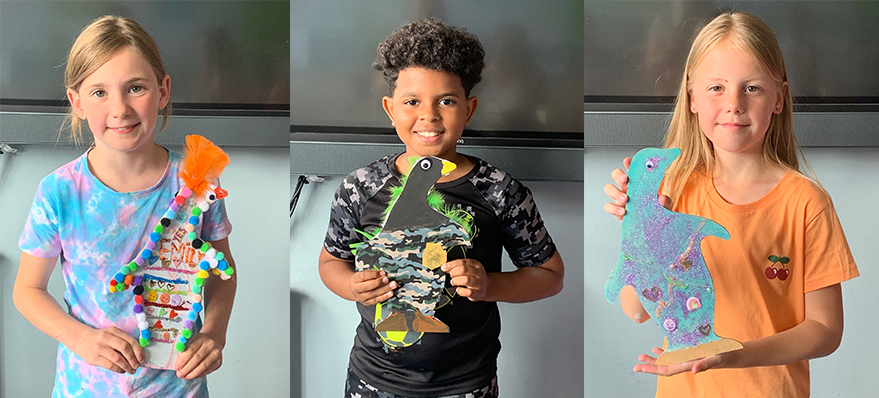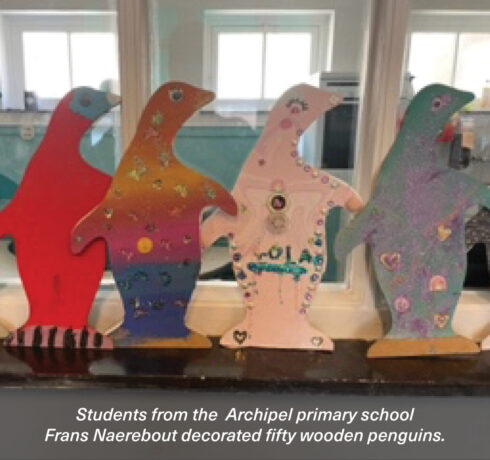The Frans Naerebout primary school in Vlissingen and Damen Naval have taken part in the Australian Antarctic Festival to raise money for the Mawson’s Huts Foundation. Students from grades 3-4 and 5-6 decorated fifty chipboard penguins, with Damen Naval sponsoring their craft materials.
The festival is a biennial event aimed at promoting awareness of Antarctica, particularly among school children. It is organised by the non-profit charity Mawson’s Huts Foundation with support from the Australian Government through the Australian Antarctic Division, the Government of Tasmania and Hobart City Council.
 Three students proudly show their work of art. The penguins are currently on their way to Australia for the exhibition.
Three students proudly show their work of art. The penguins are currently on their way to Australia for the exhibition.
Schools from signatory nations to the Antarctic Treaty are being invited to decorate penguins which will then be displayed in Hobart, Tasmania. The exhibition will raise money for the conservation of Mawson’s Huts, the historic huts in Denison, East Antarctica, which were used for expeditions to Antarctica between 1911 and 1914.
 The Australian Antarctic Festival is a biennial event for schools around the world.
The Australian Antarctic Festival is a biennial event for schools around the world.
The Netherlands signed the treaty in 1990 and, because Damen Naval built the ASRV Nuyina, the new research and supply ship for Australia, the company was asked to find a school in Vlissingen that wanted to participate in the project. Frans Naerebout primary – an art and culture-focused school – responded enthusiastically to the offer to participate in the project. It was initially supposed to take place in 2020, but due to the corona pandemic and the subsequent lockdown, the festival was postponed.
According to the school’s headmistress Nicole Dieleman, the children enjoyed the challenge. “They loved it! They did their utmost to make something beautiful out of it.” She adds: “As an art and culture school, it is great to be able to make something for a project about sustainability, climate, diversity, habitats and the diversity of penguins. We were able to link world studies and art in this project.”
The fifty penguins were richly and creatively decorated with glitter, sequins, paint, pompoms, beads, stickers and more. They are now on their way to Tasmania where they will shine at the exhibition in late August. “They look beautiful, and we hope they will be given a wonderful place at the exhibition. We wish them a safe journey and a very good time,” concludes Nicole.

